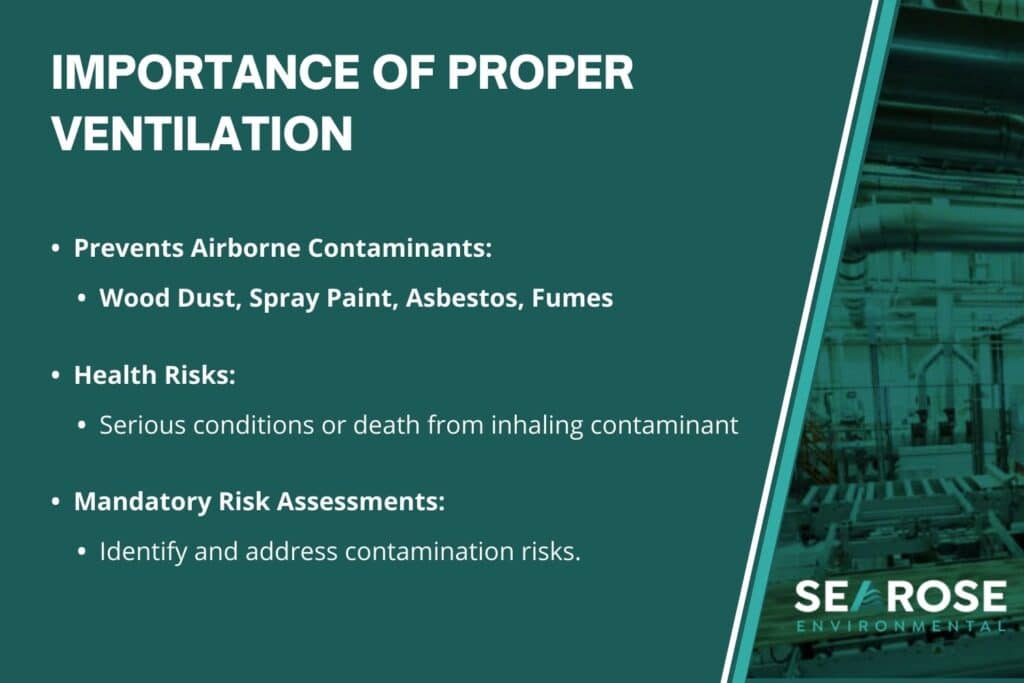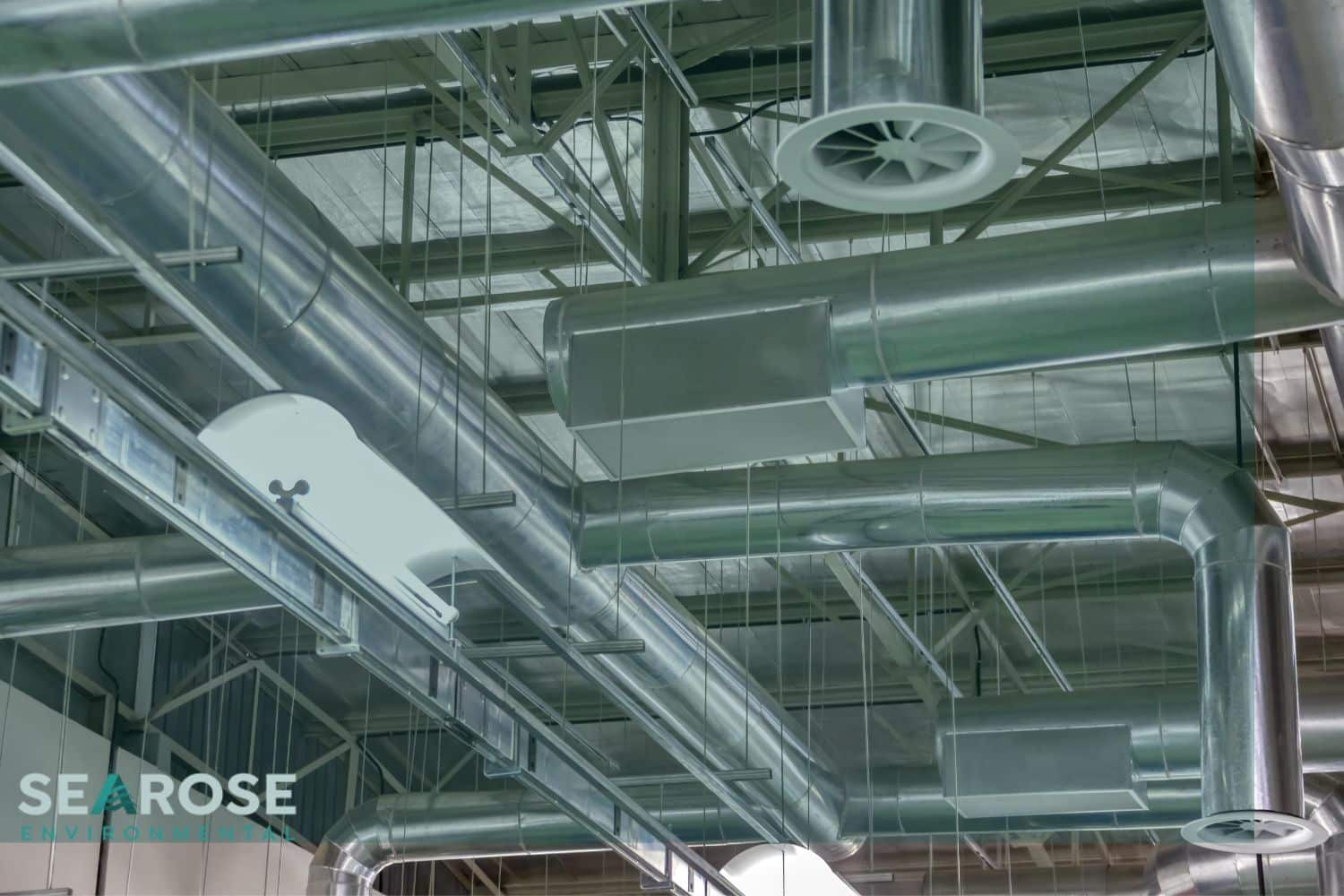All commercial or industrial buildings in Australia are required to have a proper ventilation system to manage the quality of air in the workspace and provide a safe and healthy working environment for all workers.
There are specific ventilation requirements that businesses must adhere to, and these requirements can vary depending on the type of industrial or manufacturing activity carried out within the premises.
To help your business keep in line with Australia’s safe work requirements, we have prepared this guide to provide an overview of the various ventilation requirements for industrial and commercial buildings. We’ll also cover the possible ventilation methods and solutions that are applicable to your workspace.
Building code ventilation requirements
The National Construction Code (NCC) is the primary provider of the design and construction guidelines for commercial buildings in Australia. According to the NCC, the building code ventilation requirements for buildings must include natural ventilation and, if necessary, mechanical ventilation. The Code states that openable windows must be equivalent to 5% of the floor space in a particular area.
In addition to the NCC, Safe Work Australia also covers ventilation requirements for buildings that may generate or contain airborne contaminants.

Safe Work stipulates that businesses must ensure that no person at the workplace is exposed to a substance or mixture in an airborne concentration that exceeds the relevant exposure standard for the substance or mixture.
There are three types of exposure standards:
- 8-hour time-weighted average – the average airborne concentration of a particular substance permitted over an eight-hour working day and a five-day working week.
- Peak limitation – a maximum or peak airborne concentration of a particular substance determined over the shortest practicable period of time (not exceeding 15 minutes).
- Short-term exposure limit – the time-weighted maximum average airborne concentration of a particular substance permitted over a 15-minute period.
These exposure standards vary based on the type of airborne contaminant and must be adhered to ensure a safe working environment for all onsite staff. The current exposure standards are currently updated with the transition to the new workplace exposure limits list planned for implementation from 1 December 2026.
Natural vs mechanical ventilation methods
Natural ventilation in the workplace refers to the presence of sufficient flow of air into and out of a workspace. It can be easily achieved with the addition of windows or other openings to create pressure differentials that drive airflow within the building.
In most industrial worksites, natural ventilation is not sufficient to improve the quality of air in the workspace, requiring the application of mechanical ventilation methods. Mechanical ventilation includes the use of equipment such as exhaust fans, air filters, and heating, ventilation and air conditioning (HVAC) systems to ensure a consistent and healthy working environment by isolating and removing pollutants in the air.

The importance of proper ventilation for worksites
Most industrial work processes release dust, gases, fumes, vapours, or mists into the air, which can linger and are difficult to detect without specialised equipment. When these airborne contaminants are breathed in, they may cause the development of serious health conditions that can result in lifelong impairments or even death.
Examples of such contaminants include:
- Wood dust – tiny particles of wood that are generated from woodwork processes such as cutting or shaving.
- Spray paint – toxic chemicals that are produced by spray painting
- Asbestos – fibrous silicate mineral that is usually formed in the faulting and fracturing of rock material
- Fumes – noxious gases such as emitted during certain chemical processes
For this reason, all businesses are required to perform thorough assessments of their work processes to determine any risks of air contamination and take the necessary actions to implement a solution to address these risks.
Types of ventilation systems for commercial buildings
Apart from natural ventilation, there are several solutions for commercial and industrial ventilation, each with its own use cases and applications.
Fume extraction system
A fume extraction system is designed to remove the harmful fumes that are created as a by-product of welding, cutting, grinding. By being placed close to the point of fume generation, the extraction system can effectively remove any harmful fumes before they can contaminate the workspace air.
HVAC system
An HVAC system is used as an air management tool within a commercial workspace — it reduces heat, condensation, and any exhaust pollutants that result from manufacturing or industrial activities. Almost all types of commercial buildings can benefit from a well-designed and installed HVAC system.
Dust extraction system
Invisible dust particles generated from industrial processes can be managed and prevented from lingering in the open workspace atmosphere through the use of a dust extraction system.

Invest in the right ventilation system with Searose
Installing a proper commercial ventilation system in a building or workspace can reduce the airborne risks posed by certain industrial processes, ensure the safety of workers, and meet the ventilation requirements set out by the NCC and Work Safe Australia.
When choosing a ventilation system for a workplace or facility, businesses should look at the specific requirements outlined in the workplace exposure limits list to determine the right type of ventilation system needed. Other factors to look at include the noise level of the ventilation system during its operation, as well as energy efficiency to keep operational costs low.
At Searose Environmental, we are the experts in commercial ventilation systems across various industries for businesses in Brisbane and Sydney. We offer services including professional consultation for workspace ventilation requirements, installation, maintenance and repair for commercial ventilation systems. If your business requires industrial ventilation services, contact our team today to find out how we can assist you.
